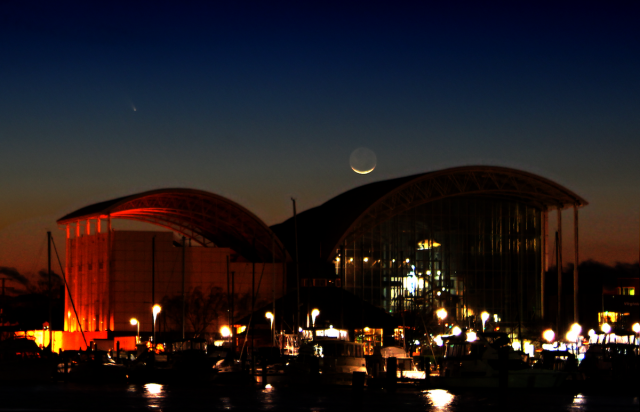See comet PANSTARRS before it fades out entirely
Ars Technica » Scientific Method 2013-03-18
Setting the scene
The view of the Virginia Air and Space Center with the setting moon and comet.
Kunio Sayanagi
7 more images in gallery
Over the past couple of weeks, residents of North America have had a bit of a treat. If the weather cooperated, you'd be able to catch a glimpse of the comet PANNSTARS, named after the telescope that first spotted it. PANNSTARS wasn't expected to be a big deal when it was first spotted, but it turned out to be briefly visible to the naked eye, and it's still easy to spot with a pair of binoculars. The challenge is that it's typically only visible shortly after sunset, leaving a narrow time window to catch it. On top of that, winter skies have been pretty aggressively gray in many areas of the country.
Kunio Syanagi is an Ars contributor and assistant professor of Planetary Science at Hampton University, and he was fortunate enough to catch the comet at the Virginia Air and Space Center (at NASA's Langley Research Center). We've put together a gallery of some of his photos, and we invite you to share you own in the comments.
If you've not seen it yet, there's still a chance to catch it. We found the best general advice for viewing at EarthSky, which mentions that you can typically catch it on the western horizon shortly after sunset. But if you have specific advice for where to spot it from your area, please let us know. And if someone could clear the clouds out of New York City for a bit, that would also be welcome.
Read on Ars Technica | Comments
